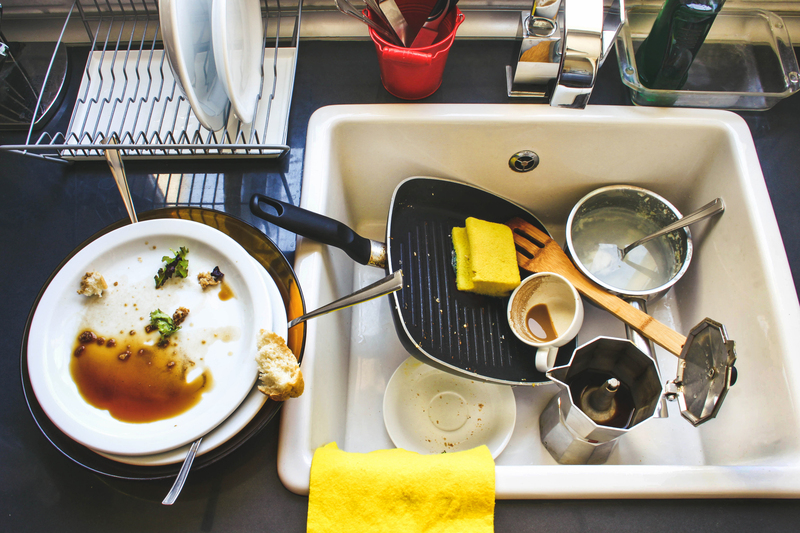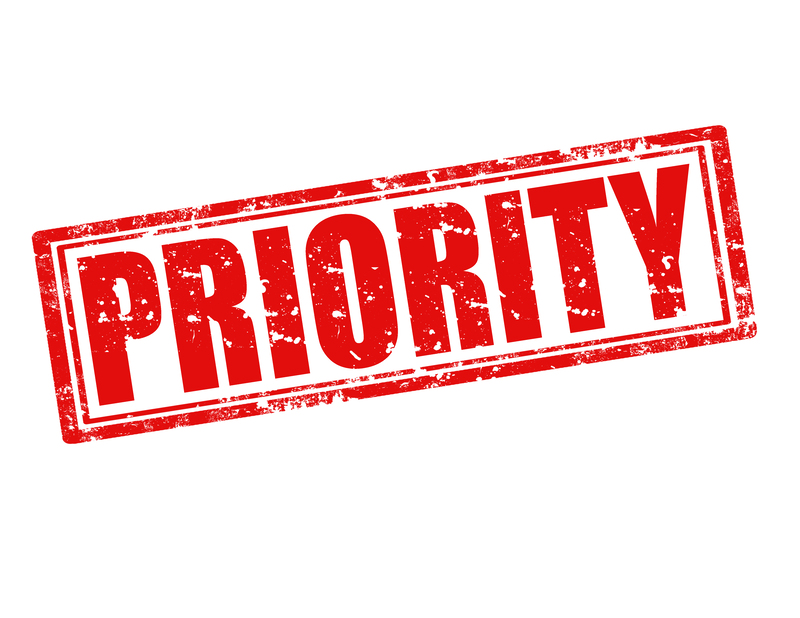Packing Perfection: Your Moving House Guide
Posted on 11/06/2025
Packing Perfection: Your Moving House Guide
Relocating to a new home is one of life's most significant milestones. While it brings fresh beginnings, it also involves the challenge of organizing, sorting, and packaging your entire life into boxes. Whether you're moving across town or to a new city, ensuring you pack efficiently can save time, money, and reduce stress on moving day. This comprehensive guide will walk you through packing for a house move like a pro, ensuring you achieve packing perfection from start to finish.
Why Packing Matters: The Foundation of a Stress-Free Move
Many people underestimate the importance of systematic packing. However, a well-organized move not only safeguards your belongings but also simplifies the entire relocation process. By adopting a strategic approach to packing, you can prevent damage to valuables, avoid unnecessary rush, and makes unpacking at your new abode seamless.
- Reduces stress by keeping you organized
- Saves money by preventing costly breakages
- Makes unpacking easy, so you settle in faster
- Frees up time for other moving tasks

Essential Supplies for Packing Your House
Before you start filling boxes, it's essential to gather the right supplies. Having the proper materials on hand lets you work systematically and ensures your possessions are protected during transport.
- Sturdy moving boxes of various sizes
- Packing tape (preferably heavy-duty)
- Bubble wrap and packing paper for cushioning
- Stretch wrap for furniture and drawers
- Permanent markers for labeling
- Scissors / box cutters
- Old blankets or towels for padding
- Garbage bags for lightweight, soft items
- Labels or colored tape to color-code boxes
Pro Tip: Buy packing materials in bulk to save money and prevent last-minute runs to the store!
Packing Strategies for a Perfect Move
1. Planning Ahead
A successful move starts weeks before the actual moving day. Create a packing checklist, assign deadlines, and designate roles if you're not moving solo.
- 6-8 Weeks Before Moving: Begin decluttering each room. Throw away or donate items you don't use.
- 4 Weeks Before Moving: Book moving services, gather supplies, and plan your packing schedule.
- 2 Weeks Before Moving: Start packing items you use less frequently.
- 1 Week Before Moving: Pack the rest of your household, leaving only everyday essentials for the last days.
2. Declutter Ruthlessly
Don't move what you no longer need! Moving home is the perfect time to declutter. Sort items into four categories:
- Keep
- Donate
- Sell
- Throw away/recycle
Items like old paperwork, unused electronics, and outgrown clothing just add more boxes and hassle. The less you transport, the easier (and cheaper) your move will be.
3. Organize by Room
For packing perfection, tackle one room at a time. This method prevents confusion and mixes less, making unpacking in your new home logical and organized.
- Label every box with its contents and designated room using large, bold text.
- Color-code with stickers or tape for fast identification by you and your movers.
4. Safeguard Valuables
For fragile and precious items, pack with extra care:
- Wrap breakables individually with bubble wrap or packing paper.
- Place dishes vertically, separated by paper, to reduce surface area and impact.
- Don't overpack boxes with heavy items--use smaller boxes for books and fragile goods.
- Cushion the bottom and sides of each box.
- Mark boxes with "Fragile" labels and arrows for orientation.
How to Pack for a House Move: Room-by-Room Tips
Kitchen
- Cull expired food and use up perishables before moving.
- Use dish pack boxes with cross-dividers for glasses and plates.
- Wrap knives in packing paper, then inside a dish towel, and secure with tape.
- Defrost fridge/freezer at least 24 hours before leaving.
Living Room
- Remove legs from coffee tables and wrap separately for safer transport.
- Use stretch wrap on sofas, then add blankets for cushioning.
- Pack electronics in original boxes when possible; otherwise, use plenty of padding.
- Coil up and label cables to prevent a tangled mess on unpacking.
Bedrooms
- Place out-of-season clothes in vacuum bags.
- Keep bedding in large, labeled bins or clearly marked boxes.
- Use wardrobe boxes for hanging clothes, so they're ready to hang upon arrival.
Bathroom
- Ensure bottles are sealed tightly or place them in plastic bags to contain leaks.
- Pack a small box of essentials (toothbrush, towels, medication) for the first night in your new place.
- Dispose of nearly empty supplies or expired medicines.
Garage and Outdoor Items
- Get rid of half-used cans of paint, chemicals, or prohibited items.
- Drain fuel from equipment like lawnmowers and trimmers.
- Bundle garden tools together; wrap sharp edges for safety.
Expert Packing Hacks for a Flawless Move
- Take photos of complicated setups (like electronics and shelf units) before dismantling, so you can reassemble with ease.
- Use towels and linens to wrap fragile items--this doubles as cushion and reduces waste.
- Fill every gap: Empty space inside boxes can cause items to shift; fill with socks, clothes, or crumpled paper.
- Keep weight manageable: Aim for a max of 20kg per box to avoid injuries and box breakage.
- Label all sides of each box, so you can identify contents no matter how they're stacked.
- Pack a "Moving Day" kit: Include important documents, chargers, snacks, and items you'll need right away.
Frequently Overlooked Packing Details
- Keep hardware together: Place screws, bolts, and hardware in labeled bags taped to their furniture item.
- Make arrangements for pets: Have a pet bag ready with food, leash, bedding, and toys.
- Protect floors: Use old blankets or runners to protect surfaces in both your old and new homes on moving day.
Should You Hire Professional Packers?
Not everyone has the time or desire to pack for a house move personally. Professional packing services offer convenience, speed, and expertise--especially for large homes, fragile collections, or when you're short on time.
- Pros: Fast, insured, and professional-level packing perfection.
- Cons: Costs extra, and you'll need to oversee organization to ensure everything goes where you want.
For many, combining DIY packing (for personal/valuable items) with professional help for bulkier or fragile items achieves the best results.
Unpacking with Ease: Settling into Your New Home
Unpacking can feel overwhelming, but the right strategy makes it manageable:
- Start with essentials: Unpack the "first night" box with bedding, toiletries, and snacks.
- Set up bedrooms and bathrooms first for a comfortable first evening.
- Refer to labels and color codes to place boxes in the correct rooms immediately.
- Tackle the kitchen next; setting this up helps you keep routines and energy up.
- Break down boxes and recycle materials as you go for a clutter-free house.

Quick Packing Checklist for a Successful Move
- Plan your moving timeline and gather supplies early.
- Declutter ruthlessly--don't pack what you don't love or need.
- Pack room-by-room, clearly labeling and organizing as you go.
- Take extra care with fragile and valuable items.
- Fill boxes completely but not too heavy.
- Keep essentials handy for the first days in your new home.
- Consider professionals for packing or moving specialty items.
Conclusion: Mastering the Art of Packing for Your House Move
Achieving packing perfection requires thoughtful preparation, the right materials, and an organized approach. By following the strategies outlined in this guide, you'll not only safeguard your belongings but also enjoy a smooth and stress-free transition into your new home. Every moving house guide agrees--the effort you invest upfront will pay off with a seamless, damage-free move and an easy settling-in process.
Whether you're orchestrating a family move or relocating solo, don't forget to breathe, celebrate your progress, and look forward to all the new memories you're about to create in your fresh space!
For more moving tips and expert packing advice, explore our blog and make your next move your best move ever!





